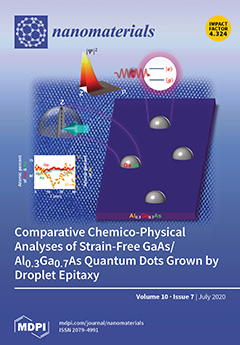Materials from a large family of transition metal trichalcogenides (TMTCs) attract considerable attention because of their potential applications in electronics, optoelectronics and energy storage, but information on their toxicity is lacking. In this study, we investigated the toxicity of ZrS
3, a
[...] Read more.
Materials from a large family of transition metal trichalcogenides (TMTCs) attract considerable attention because of their potential applications in electronics, optoelectronics and energy storage, but information on their toxicity is lacking. In this study, we investigated the toxicity of ZrS
3, a prominent TMTC material, toward photoluminescent
E. coli bacteria in a bioluminescence test. We found that freshly prepared ZrS
3 suspensions in physiological saline solution with concentrations as high as 1 g/L did not exhibit any toxic effects on the bacteria. However, ZrS
3 suspensions that were stored for 24 h prior to the bioluminescence tests were very toxic to the bacteria and inhibited their emission, even at concentrations down to 0.001 g/L. We explain these observations by the aqueous hydrolysis of ZrS
3, which resulted in the formation of ZrO
x on the surface of ZrS
3 particles and the release of toxic H
2S. The formation of ZrO
x was confirmed by the XPS analysis, while the characteristic H
2S smell was noticeable for the 24 h suspensions. This study demonstrates that while ZrS
3 appears to be intrinsically nontoxic to photoluminescent
E. coli bacteria, it may exhibit high toxicity in aqueous media. The results of this study can likely be extended to other transition metal chalcogenides, as their toxicity in aqueous solutions may also increase over time due to hydrolysis and the formation of H
2S. The results of this study also demonstrate that since many systems involving nanomaterials are unstable and evolve over time in various ways, their toxicity may evolve as well, which should be considered for relevant toxicity tests.
Full article






